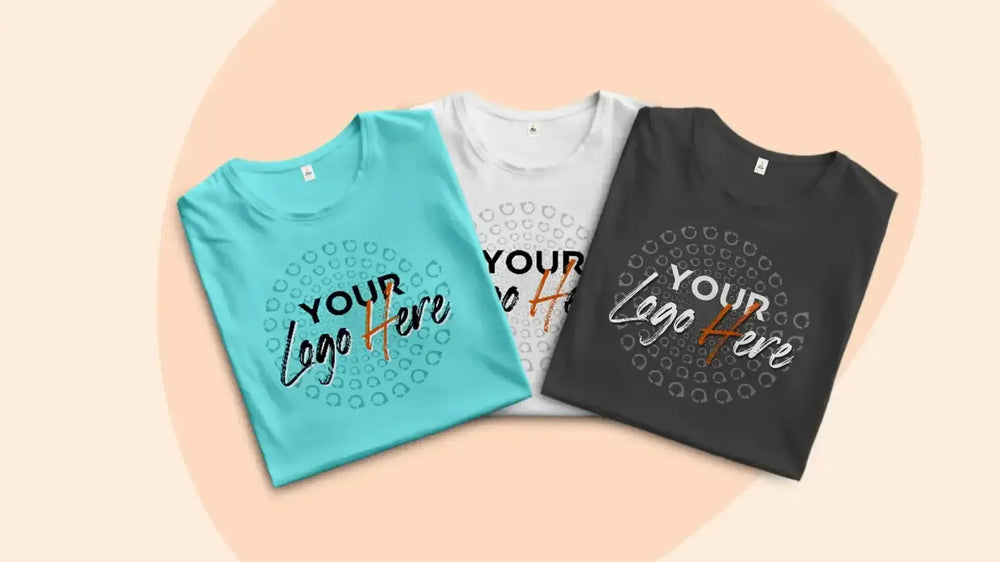¿Qué es la serigrafía?

La serigrafía es una opción popular para la impresión personalizada. Esta técnica es muy antigua, pero se ha ido modificando con el paso del tiempo. Existe una gran demanda de servicios de serigrafía, tanto por parte de clientes comerciales como particulares, y se ofrece una gran variedad de servicios. Sin embargo, es importante comprender qué es la serigrafía, su historia, el proceso detallado y algunas ventajas y desventajas de esta técnica de impresión.
En esta publicación, hemos cubierto todos los aspectos importantes de la serigrafía con gran detalle.
Historia de la serigrafía:
La serigrafía se observó por primera vez durante la dinastía Song (960-1279 d. C.) en China. Los chinos utilizaban este método para transferir los diseños a la tela y confeccionar prendas. Sin embargo, el mérito de haber convertido la serigrafía en una técnica de impresión reconocida recae en los japoneses, quienes la utilizan para confeccionar más prendas de diseño. Los japoneses son conocidos por su innovación en sus métodos de serigrafía, ya que utilizaban plantillas, pantallas tejidas con cabello humano y pinceles rígidos para transferir la tinta a través de las pantallas a la tela.
El uso de la serigrafía en Europa se identificó a principios del siglo XVIII. El uso de biombos era común en Francia a principios del siglo XVII, pero no era una técnica de pintura ampliamente aceptada en aquel entonces. Dado que la seda era un producto escaso, la técnica se popularizó en el país solo cuando se inició el comercio de mallas de seda procedentes de Asia.
A principios del siglo XX, se produjo un desarrollo revolucionario en el campo de la serigrafía cuando tres hombres, Roy Beck, Charles Peter y Edward Owens, idearon la idea de utilizar plantillas de fotografías para serigrafía.
En 1938 se produjo un avance significativo en la serigrafía cuando un grupo de entusiastas de la impresión formó la Sociedad Nacional de Serigrafía . Seri es una palabra latina que significa seda y graphein, en griego, significa dibujar. Sin embargo, el grupo se propuso promover su trabajo como arte y no como impresión comercial.
Más tarde, en la década de 1960, varios artistas pop utilizaron la serigrafía y, más tarde ese mismo año, el inventor Michael Vasilantone creó la primera máquina de serigrafía. Esta máquina evolucionó con el tiempo y dio origen a la prensa moderna que utilizamos hoy en día.
Proceso de serigrafía: paso a paso
La técnica de serigrafía más popular consiste en utilizar una emulsión especial fotorreactiva para crear plantillas personalizadas. Esta técnica permite crear los tipos de plantillas más complejos, por lo que es un método de impresión comercial muy popular.
Estos son los pasos involucrados en el método de serigrafía:
Paso 1: Creación del diseño
Este es el primer paso del proceso, en el que la impresora analiza el diseño que se transferirá a la tela. Se crea una plantilla imprimiendo el diseño sobre una película de acetato transparente.
Paso 2: Preparación de la pantalla
Una vez creado el diseño, el impresor seleccionará una malla para el siguiente proceso. La selección de la malla se basa en la complejidad del diseño y el tejido sobre el que se imprimirá. La malla está recubierta con una capa de emulsión fotorreactiva. La emulsión se desarrolla y endurece al exponerse a la luz intensa.
Paso 3: Exposición de la emulsión
La impresora combina la plantilla de acetato y la malla de emulsión reactiva a la luz, y expone el diseño a una luz intensa. La luz reacciona con las partes expuestas, recubiertas de emulsión, y el resto del diseño permanece líquido.
Se utiliza una pantalla para un color y si el diseño tiene más de un color, tendrás que hacer diferentes pantallas.
Paso 4: lavar la emulsión para crear la plantilla
Una vez endurecidas las piezas recubiertas con emulsión, los expertos enjuagan cualquier resto de emulsión no endurecida. El resultado final es una pantalla limpia con un diseño que se imprimirá en la tela. A continuación, se seca la pantalla y se realizan las rectificaciones necesarias.
Paso 5: Preparación del artículo para imprimir
La impresión se configura en la prensa, donde se instala la pantalla y se extiende la tela debajo. La configuración de impresión depende del tipo de prensa. La impresora automática de carrusel rotativo es la prensa más utilizada, ya que permite el trabajo simultáneo de varias pantallas, lo que facilita la impresión de diseños de diferentes colores.
Paso 6: Presionar la tinta a través de la pantalla
La pantalla de diseño no se coloca sobre la tela, sino que se le añade tinta. Con una espátula, se presiona la tinta hacia abajo, la cual pasa a la tela desde las zonas abiertas de la plantilla. Si se trata de un pedido al por mayor, la tela se cambia una tras otra.
La malla se puede reutilizar ya que la emulsión se lava con un agente de limpieza especial.
Paso 7: secado y comprobación del producto terminado
La prenda impresa se envía a una secadora, donde se trata la tinta para crear un acabado transparente y suave. El producto final es revisado por el personal de control de calidad, se lava para eliminar cualquier residuo y está listo para su envío al consumidor.
Ventajas y desventajas de la serigrafía
Es importante conocer todo sobre el proceso de impresión antes de imprimir tus camisetas, gorras o jerseys con tu diseño favorito. Si has elegido la serigrafía, estás tomando una decisión acertada, ya que es uno de los métodos de impresión más confiables. Aquí tienes algunas ventajas y desventajas que debes conocer:
Ventajas:
- Método altamente rentable para pedidos al por mayor
Si realiza pedidos al por mayor, la serigrafía es la mejor manera de ahorrar dinero. Una vez preparada la pantalla para un color, puede usarse varias veces para imprimir en diferentes prendas. Cuanto mayor sea la cantidad, menor será el costo por pieza.
- Un método de impresión versátil
Sea cual sea su superficie de impresión, puede confiar en la orientación de la serigrafía para obtener los mejores resultados. La serigrafía es ideal para imprimir sobre superficies planas, tela, madera, plástico e incluso metal.
- Permite el uso de múltiples tintas.
Ofrece un mejor acabado y permite el uso de diferentes tintas. Como la tinta utilizada es más espesa que la de otras impresiones, el resultado final tiene un aspecto espectacular.
- Resultados altamente duraderos y de larga duración.
Como la tinta utilizada es de alta calidad y espesa, la serigrafía es la técnica de impresión más duradera y resistente.
Desventajas:
- No es adecuado para pedidos de cantidades pequeñas y su coste es astronómico.
- Cuanto más colores añadas al diseño, más dinero tendrás que pagar.
- Para diseños complicados, preparar la pantalla es relativamente compleja.
- El gran desperdicio de agua y los residuos de tinta hacen que esta técnica de impresión no sea muy ecológica.
Preguntas frecuentes sobre serigrafía
- ¿Cómo se hace la serigrafía?
Se utiliza una malla para crear un diseño estampado. La malla se coloca sobre la tela o la superficie de impresión y la tinta se extiende a través de ella sobre la tela con una espátula. El producto final se seca.
- ¿Cuantos lavados dura la serigrafía?
Como la tinta utilizada en la impresión es más espesa, la serigrafía dura aproximadamente entre 40 y 50 lavados sin decolorarse.
- ¿Se puede eliminar una serigrafía?
Sí, se puede. Puedes usar quitaesmalte o planchar la impresión sobre otra tela para quitarla.
- ¿Cuanto cuesta serigrafiar una camiseta?
Una impresión a un solo color puede costar entre $5 y $10, dependiendo de la complejidad del diseño. En Custom One Online, nos esforzamos por ofrecerle un precio accesible.
- ¿Se utiliza todavía hoy la serigrafía?
La serigrafía es la técnica de impresión comercial más popular hasta la fecha y, con el desarrollo de máquinas de impresión avanzadas, el alcance de la serigrafía está aumentando.
- ¿Por qué es tan cara la serigrafía?
El proceso de preparación de la malla, la plantilla de diseño y la tinta es muy costoso, lo que encarece la serigrafía. Sin embargo, si realiza un pedido al por mayor, la serigrafía es el método de impresión más adecuado.
- ¿Se agrieta la serigrafía?
No, no lo hace. Secamos la tinta correctamente, lo que evita que se agriete.
- ¿Es la serigrafía la mejor opción para las camisetas?
La serigrafía tiene sus ventajas y desventajas. Si consideras la durabilidad, sí, es la mejor opción.
- ¿Cuánto tiempo se tarda en serigrafiar una camiseta?
El proceso de creación de la plantilla de diseño es largo. Sin embargo, la impresión en sí solo toma 5 minutos.
- ¿La serigrafía es duradera?
Si la tinta utilizada para la impresión es de alta calidad, la serigrafía durará mucho tiempo. Todo depende de la calidad de la tinta.
- ¿Cuáles son las desventajas de la serigrafía?
- La serigrafía es cara cuando:
- Estas haciendo un pedido pequeño.
- Hay muchos colores en el diseño.
- No funciona con colores degradados.
- La serigrafía desperdicia mucha agua.
- Preparar la pantalla es complejo y costoso.
- ¿Cuál es otra palabra para serigrafía?
Tradicionalmente, la serigrafía se conocía como serigrafía, ya que la pantalla estaba hecha de seda. También se conoce como serigrafía.
- ¿Por qué se utiliza la serigrafía?
La serigrafía es popular por su versatilidad y la posibilidad de imprimir cualquier color sobre cualquier superficie. Además, la calidad de los resultados es superior a la de cualquier otra técnica de impresión.
Esperamos que esta guía haya respondido a todas sus preguntas e inquietudes sobre serigrafía. Para cualquier otra consulta o pedido de camisetas serigrafiadas personalizadas , contáctenos en Custom One Online.


















